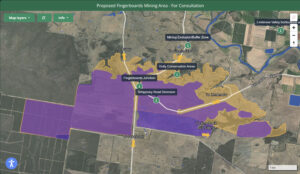
A recent study reveals that Australian farmers are increasingly utilizing loans from the Regional Investment Corporation (RIC) to alleviate debt and enhance drought readiness. The findings, detailed in the RIC Farm Loans Customer Insights Brief 2025, indicate that the primary motivations for loan usage include reducing farm business debt and preparing for adverse weather conditions.
In addition to addressing debt and drought challenges, farmers have identified key areas where RIC loans are applied. These include boosting on-farm sustainability, managing resources during droughts, and improving financial positions to negotiate more favorable interest rates with commercial banks. Many farmers are now focusing on consolidating their financial circumstances rather than pursuing growth, particularly in light of unpredictable climate events and rising operational costs.
According to John Howard, Chief Executive Officer of RIC, the overarching theme of this year’s survey is one of consolidation. Farmers are prioritizing debt reduction and managing financial volatility caused by extreme weather disruptions. “Customers indicated they are using their loans to pay down their debt, prepare for drought, and enhance sustainability,” Howard stated.
The financial benefits of RIC loans are tangible. Last financial year, new RIC loan customers enjoyed an average discount of 2.26 percent on their interest rates compared to commercial loans. This discount translated into annual savings of over $20,000 on an average loan of $1 million. These savings provide farmers with increased liquidity to reinvest directly into their operations.
“Farmers report that their RIC loans have positioned them to negotiate better interest rates with their banks when the time comes to refinance,” Howard added. He emphasized that the improved financial circumstances resulting from lower interest rates and interest-only payments, especially in the initial five years of the loan term, allow farmers to adopt more sustainable practices. This proactive approach is crucial for preparing for future disruptions.
The latest findings show a shift in farmer sentiment regarding growth. While just over half of the respondents, specifically 55 percent, agreed that their RIC loan facilitated business expansion, this figure has declined from 71 percent the previous year. This drop is likely attributable to ongoing drought conditions and challenging market dynamics.
Despite the focus on consolidation, the research indicates a strong sense of optimism among farmers. Approximately 86 percent of respondents expressed greater confidence in the future of their farms or small farming businesses with the support of a RIC loan.
The RIC Farm Loans Customer Insights Brief 2025 is based on independent research conducted over several years, aimed at understanding the impact of RIC loans on the agricultural sector. Farmers are increasingly leveraging these loans not just for immediate financial relief but also for long-term sustainability and resilience against future challenges.
For more detailed insights, interested parties can access the full report on the RIC website. The findings underscore the critical role that financial support systems play in fostering a more resilient agricultural community in Australia.






